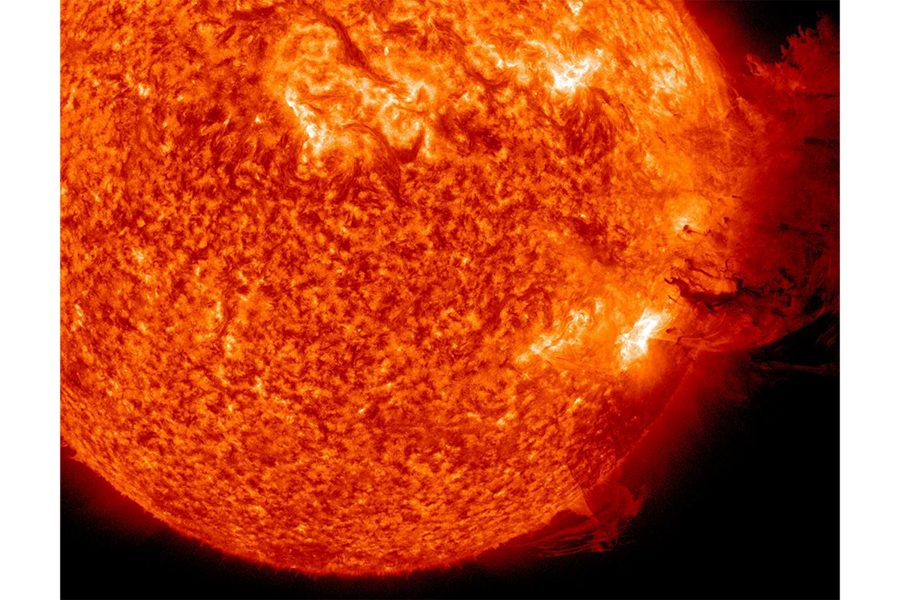Researchers calculated the economic cost of a major solar storm – and it's big
Loading...
Electricity blackouts caused by solar storms could cost the United States tens of billions of dollars per day, according to a new study published in the journal Space Weather.
These researchers were not the first to calculate the price of solar storms. But scientists in the past have focused only on the economic costs within the blackout zone – which amounts to just 49 percent of the total potential cost when indirect domestic and international supply chain losses are factored in.
Under the most extreme blackout scenario calculated, which would affect 66 percent of the US population, the daily domestic economic loss could total $41.5 billion, plus an additional $7 billion loss through the international supply chain.
"We felt it was important to look at how extreme space weather may affect domestic U.S. production in various economic sectors, including manufacturing, government and finance, as well as the potential economic loss in other nations owing to supply chain linkages," study co-author Edward Oughton, of the Cambridge Centre for Risk Studies at Cambridge Judge Business School, said in a press release. "It was surprising that there had been a lack of transparent research into these direct and indirect costs, given the uncertainty surrounding the vulnerability of electrical infrastructure to solar incidents."
Solar storms have proven themselves particularly disruptive in the past. On Valentine's Day, 2011, a solar flare and its attendant torrent of solar wind glanced off of the North Pole, warping the electric currents in our upper atmosphere and resulting in a blackout of shortwave radio transmissions in southern China. But that scenario could have had a much more disastrous ending, as Eoin O'Carroll reported for The Christian Science Monitor at the time:
In March 1989, a blast of solar wind tripped circuit breakers on Hydro-Québec's power grid, leaving six million people without electricity for nine hours. Later that year, another solar eruption caused computer crashes that brought trading on Toronto's stock market to a halt.
And 1989 was a mere ripple compared to the solar tsunami of 1859, which saw the biggest disruption of the earth's magnetic field in recorded history. In September of that year, the sun threw a massive cloud of charged plasma our way, lighting up the night sky with auroras as far south as Havana. Telegraph wires shorted out, igniting papers and shocking telegraph operators.
There is about a 12 percent chance that we'll see another solar storm of the same magnitude as the 1859 storm, known as the "Carrington event," one widely-cited 2012 paper claims. But a report released the next year by insurer Lloyd’s and Atmospheric and Environmental Research concluded that while the probability of an extreme solar storm is "relatively low at any given time, it is almost inevitable that one will occur eventually."
There is some disagreement among electrical engineering experts regarding how long potential blackouts caused by coronal mass ejections, the stream of electrically charged plasma that erupts during solar flares and other explosions on the sun, would last. Some believe that electrical outages would only last a few hours or days because electricity-generating facilities would be protected by the electrical collapse of the transmission system. Others say a blackout could last weeks or months if those transmission networks are knocked out and need to be replaced.








